It’s amazing to think that Inner Space Cavern was undetected by humans for millions of years. In fact, it was first discovered by prehistoric animals tens of thousands of years ago when sinkholes made the cavern accessible and the animals ventured down.
Those sinkholes filled in naturally and Inner Space Cavern subsequently remained hidden until 1963 when it was finally discovered by the Texas Highway Department. Once discovered, it was opened to the public in 1966.
There are now three types of tours you can take – the Adventure tour, the Hidden Passage tour and the Wild Cave tour.
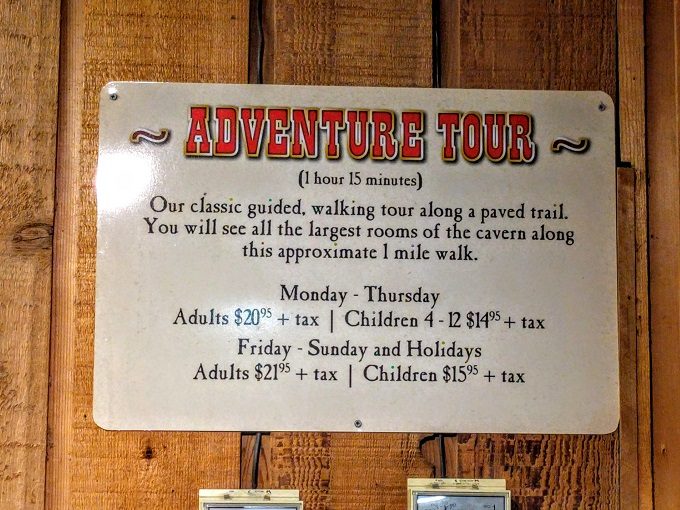
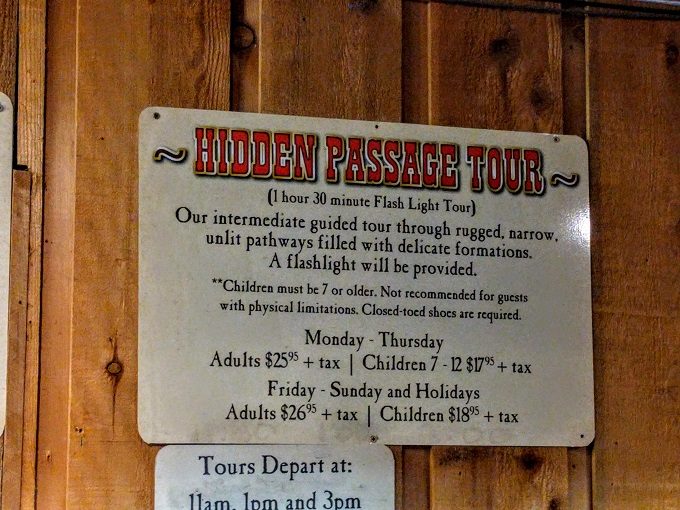
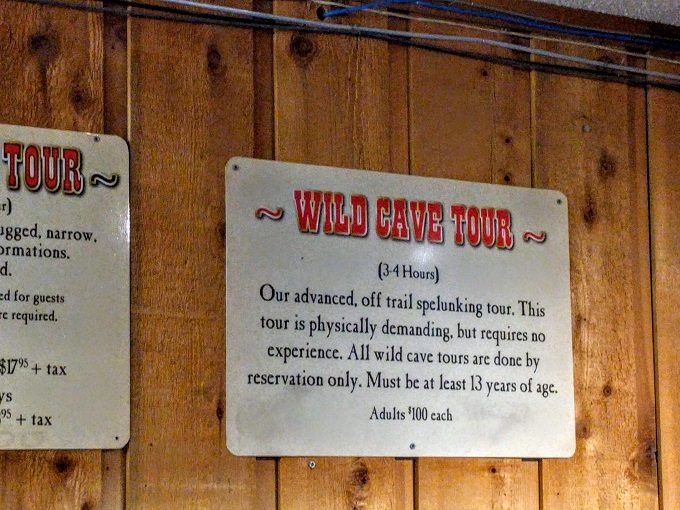
We’d love to have experienced the Wild Cave tour, but it was over budget for us. The Hidden Passage tour still sounded fairly adventurous, but the next tour wasn’t due to leave until an hour after we arrived. Shae and I therefore decided to go on the Adventure tour, figuring that we’d also be able to get some better photos seeing as we wouldn’t be relying on flashlights.
Inner Space Cavern was originally discovered through a narrow hole drilled from above, so dynamite was used to blast a better entrance into the side of the cavern.
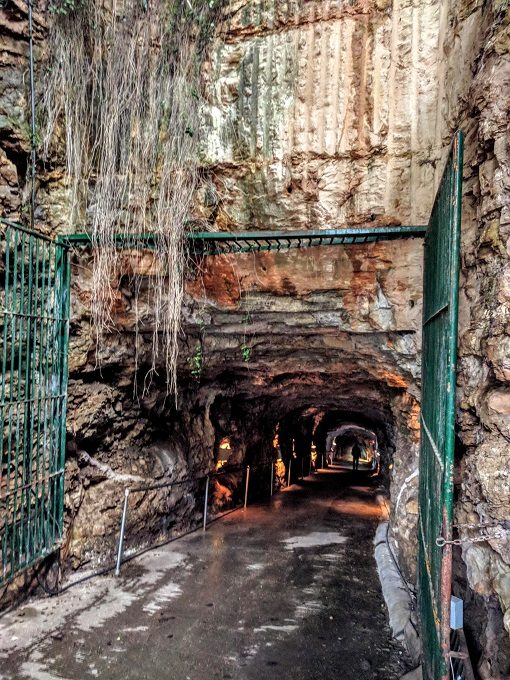
When heading underground, you’ll soon notice the humidity. The cave remains a comfortable 72°, but with 98% humidity it feels much warmer than that. The weather wasn’t great the day we visited and so I was wearing pants, but regretted not wearing shorts as I got progressively warmer and sticky as the tour went on.
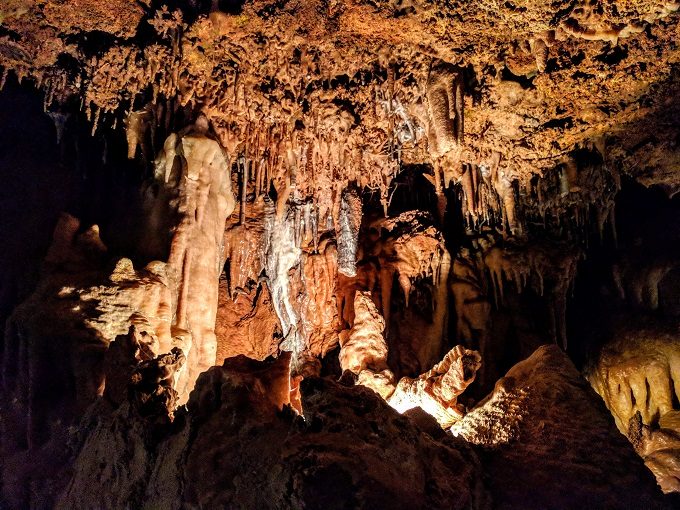
As with all caves and caverns like this, you’re not allowed to touch the formations as oils on our hands affect their growth.
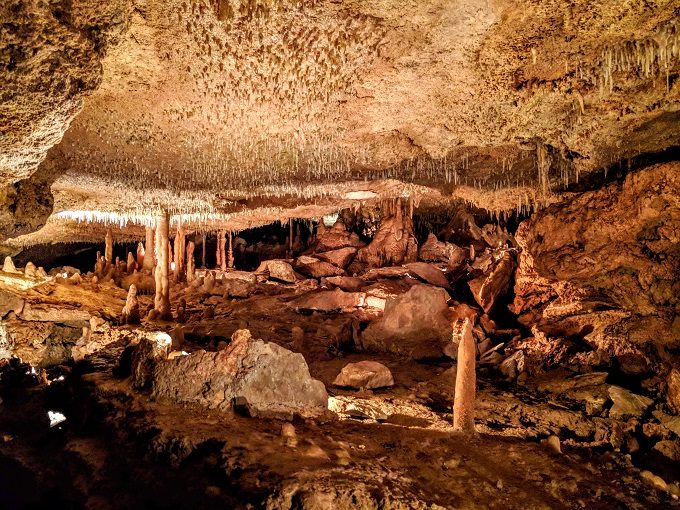
Having said that, Inner Space Cavern has the Temptation Stone. This is a dead formation, so they let visitors touch it. Our guide John warned us that 100,000 children visiting on school trips had touched it over the past year. Shae and I like to live on the edge though, so we braved the germs and touched it ourselves.
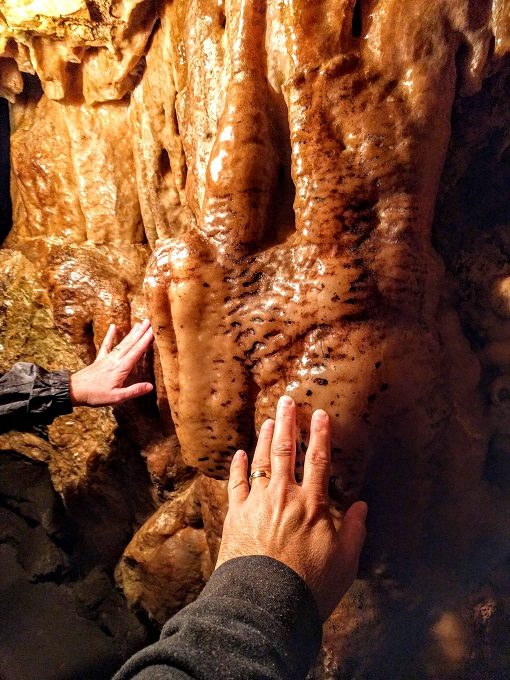
It’s always fun trying to decide what formations look like. This one reminded my of Davy Jones’s face from the Pirates of the Caribbean movies.
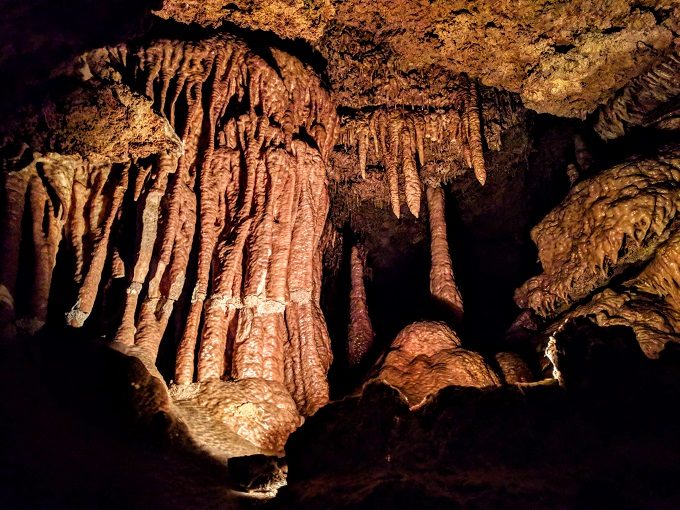
Seeing as the caverns were formed by water passing through limestone millions of years ago, many fossils and remains have been found in Inner Space Cavern. In the photo below, you can see a horn-shaped fossil in the roof of the cavern.
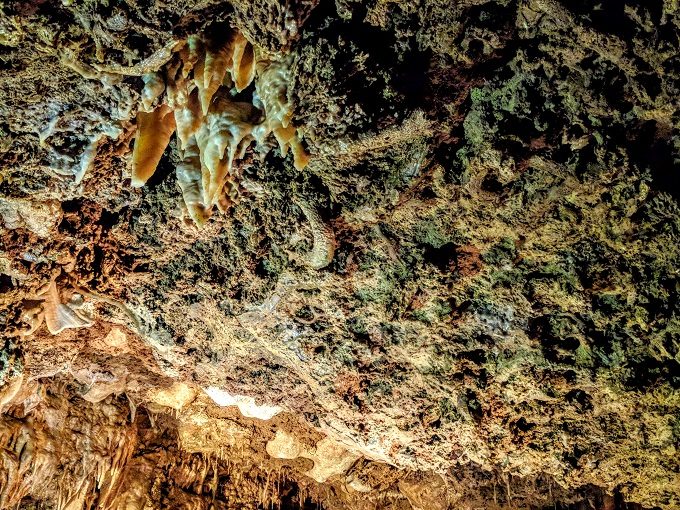
Our guide mentioned that they’ve also named many of the formations. The white formation in the foreground is called the Texas Chip N’ Dip as it’s a drapery formation that looks similar to chips being dipped into a bowl of queso.
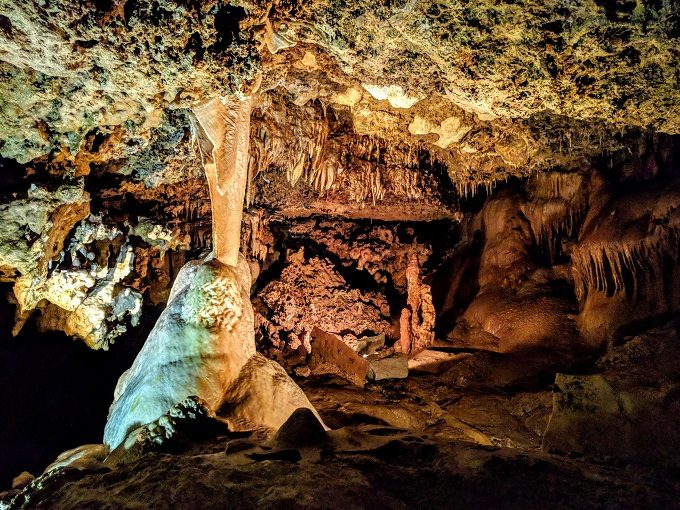
Walking through the cavern, we soon reached the Breakdown Room. You can see a fault line in this section as the cavern is in the Balcones Fault Zone.
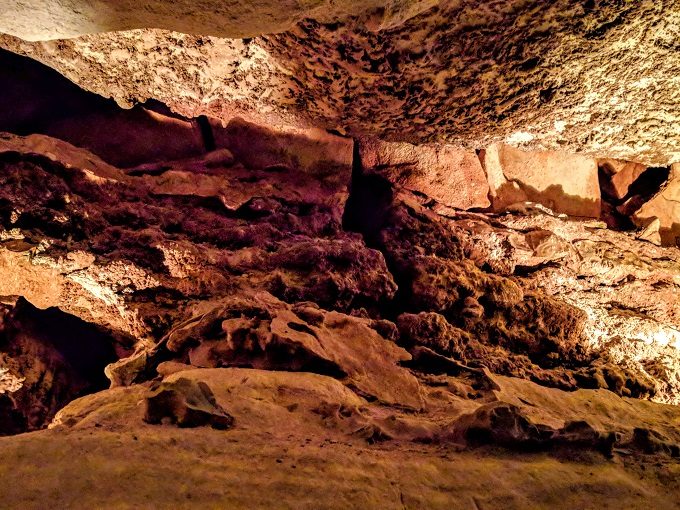
There are purple and blue lights at a few points during the tour. Those indicate sections of the cavern that go back more than a mile but which oftentimes aren’t easily accessible due to narrow gaps in the rock.
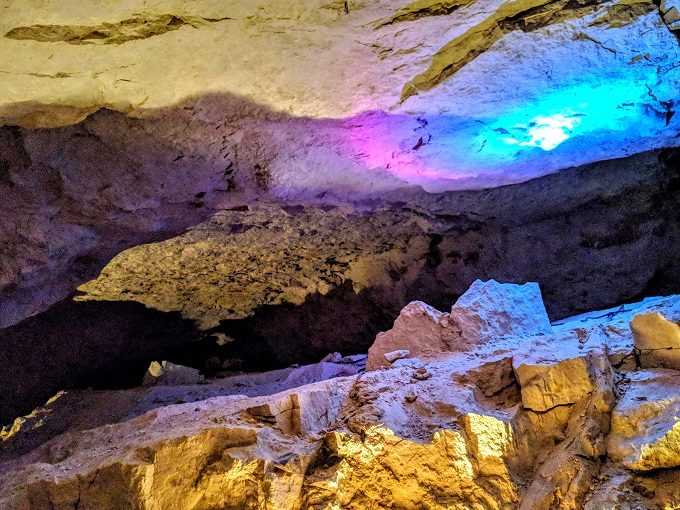
About 15 minutes into the tour, we arrived in an area of the cavern known as the Ice Cream Parlor. It’s been named that as several of the formations look like melting ice cream cones.
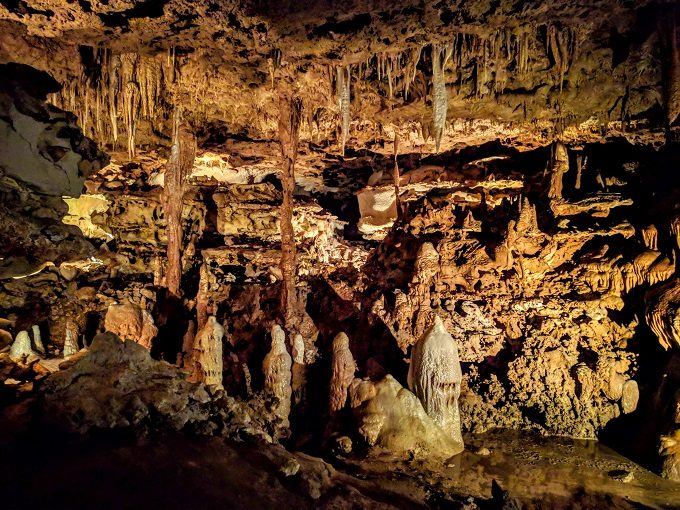
The Temptation Stone at the beginning of the tour wasn’t our only opportunity to touch something. John handed us a stalagmite which was surprisingly heavy.
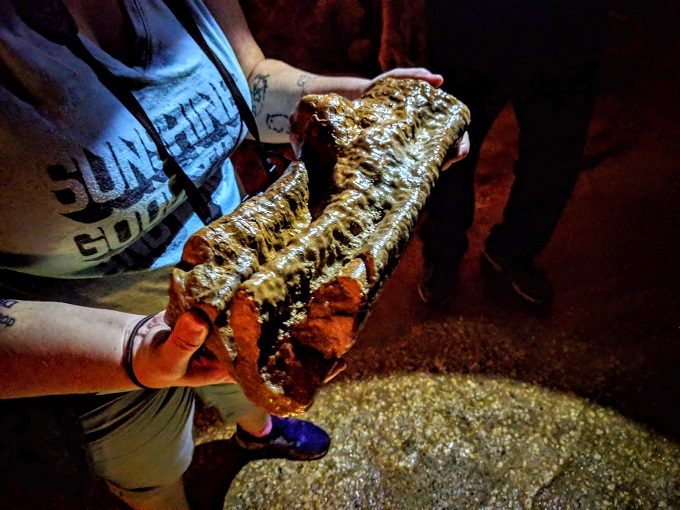
After that, we moved on to the room where Inner Space Cavern was first discovered in 1963.
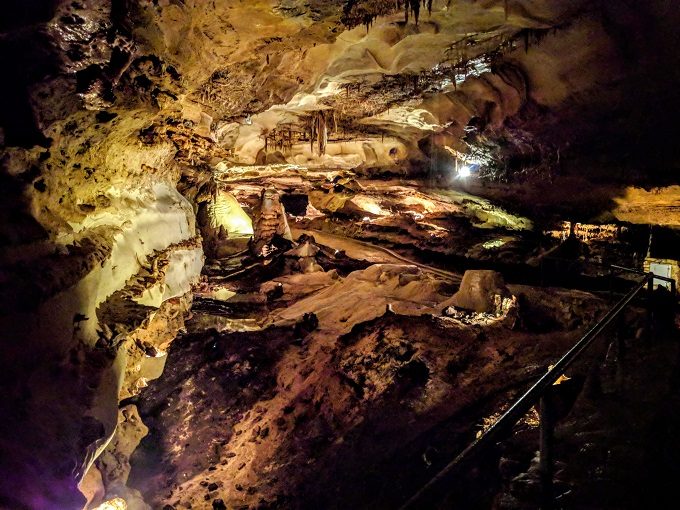
The Texas Highway Department was drilling the ground above to test its strength as they were planning on building a highway overpass. A drill bit dropped through, indicating to the crew that there was something unusual below. They drilled an even bigger hole and lowered someone down to explore.
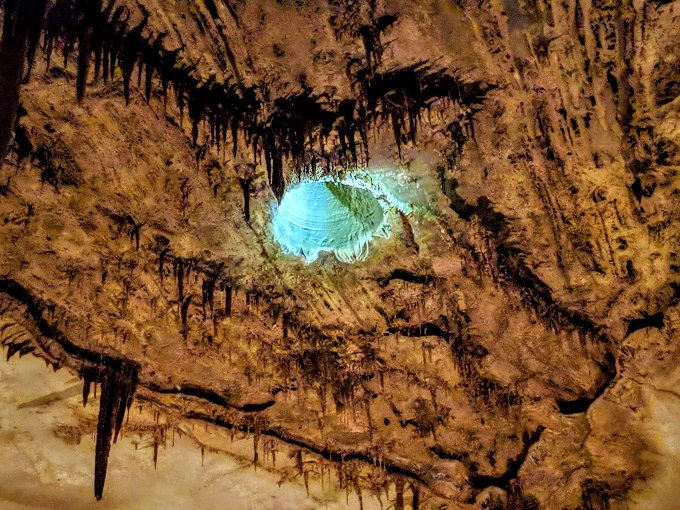
There are hundreds of bats that live in the cavern – some as small as two inches – and apparently the person was lowered into guano (aka bat poop).
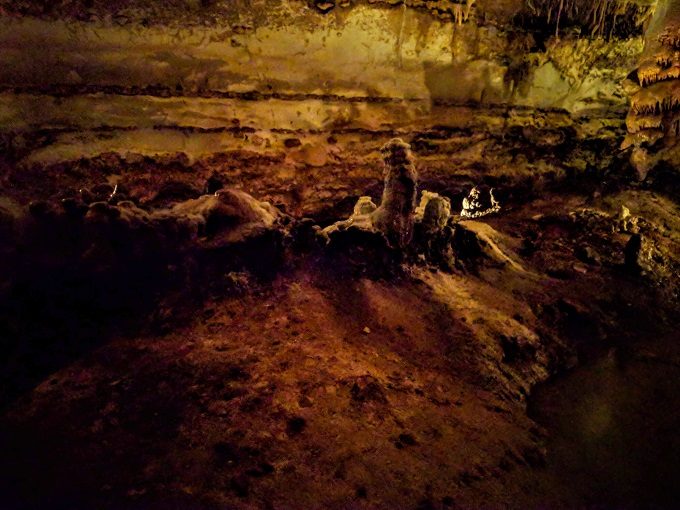
Needless to say, the cavern was pitch black and the explorer only had a flashlight to see what was down there. When his light hit the darker formation below, he initially thought it was some kind of enormous cave bear.
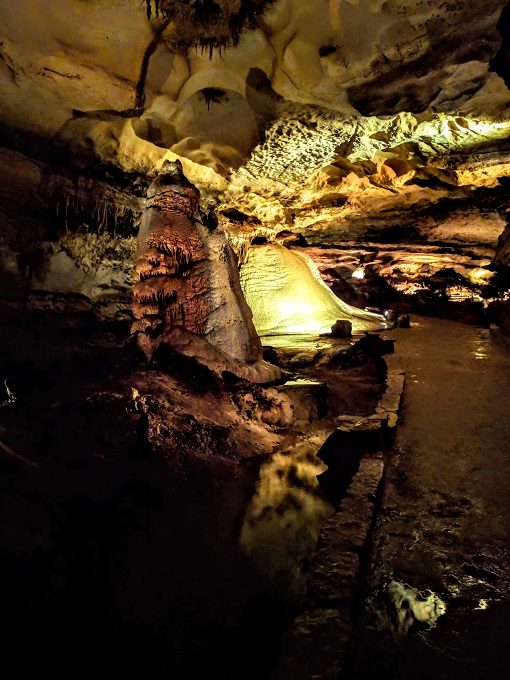
The caverns are now much more well-lit, so there’s a lot more to see. That includes a wavy formation that resembles a bacon strip; it’s colored that way due to iron in the water as it dripped down.
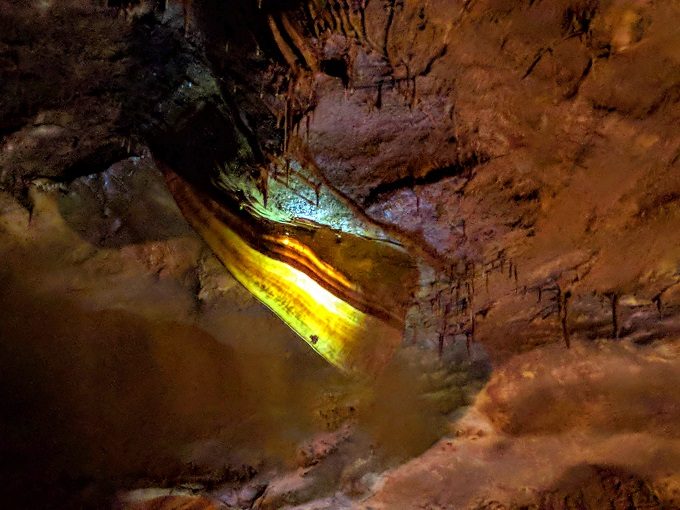
This room is also home to the oldest – and largest – formation in Inner Space Cavern. It’s called the Flowstone of Time, was formed over the course of more than 400,000 years and is enormous. I didn’t think to ask our guide how large it is, but I’d guess it’s ~20 feet wide at the base.
It’s a truly incredible formation, despite looking like a melting Marshmallow Man from Ghostbusters!
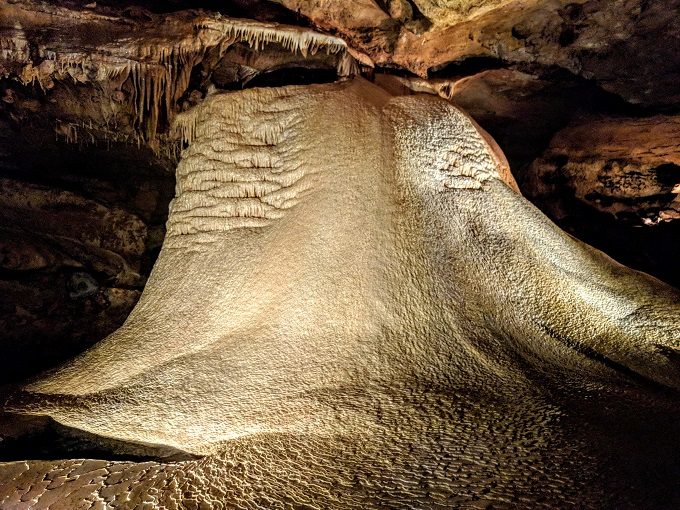
Due to all the recent rain in the area, water was flowing over Flowstone of Time more quickly than usual. The water flows down into a rim pool that holds 100 gallons.
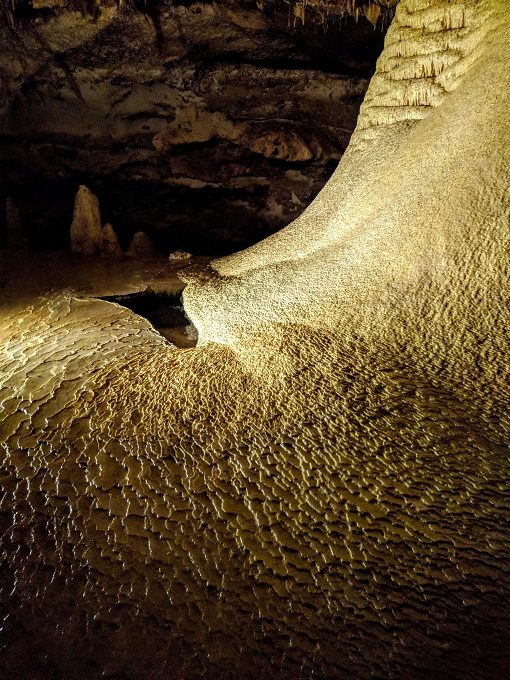
Due to the way water carved out the cavern, some sections of the ceiling looked like upside down sand dunes.
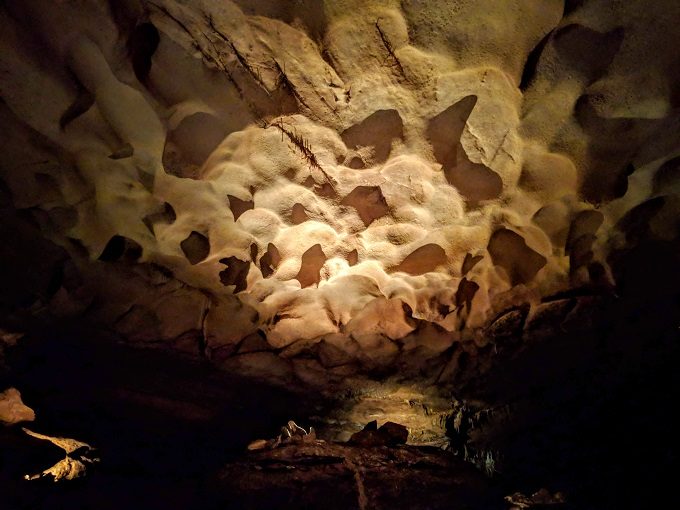
Shortly after that, we came across the Castle Balcony. This formation juts out and our guide John told us a fairy tale based on what some of the formations below look like.
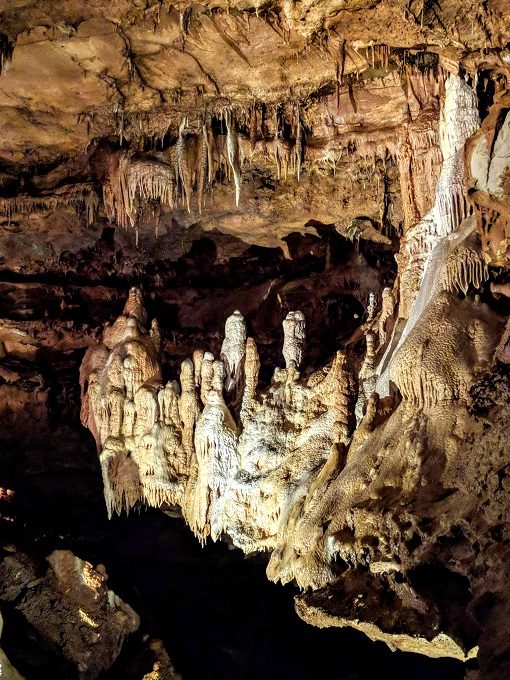
I’d mentioned earlier that animals discovered the caverns thousands of years ago when sinkholes opened up access. In a few sections of the cave, you can see where landslides have filled in those sinkholes.
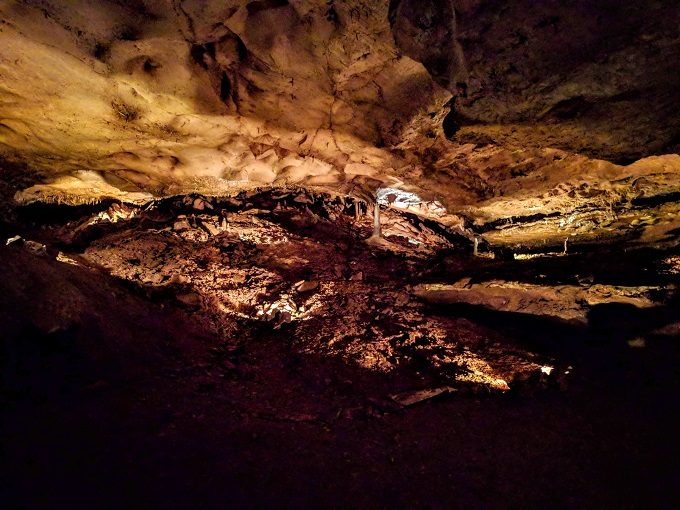
Many animals weren’t able to return to the surface, either because they couldn’t make the steep climb back up or they got trapped in deep mud below the surface. As a result, 44 animal species have been found in the cave, 11 of which are now extinct.
A strengthening wall has been built in the cavern and some of the animals whose remains have been found there are painted on the wall.
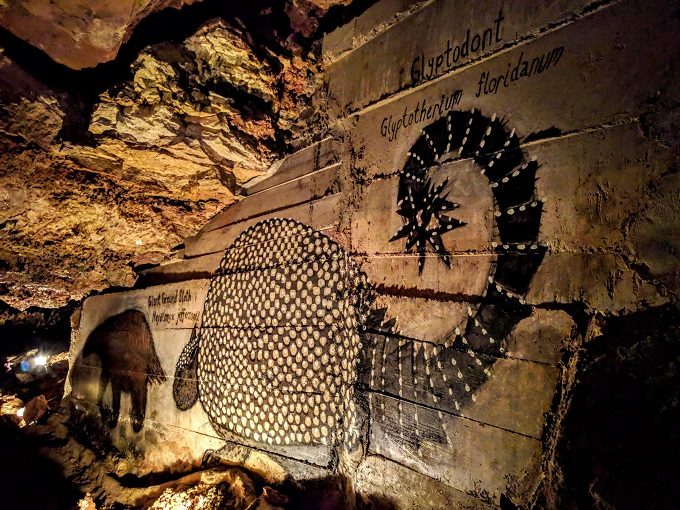
The most common remains have been those belonging to a creature called a peccary which looks like a pig.
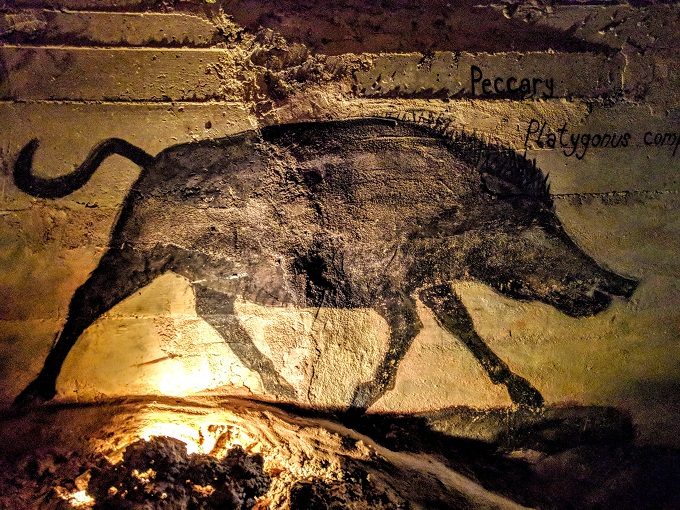
In the 55+ years since Inner Space Cavern was discovered, many bones and fossils have been found. Most of them have been removed by researchers, but a few are still on display.
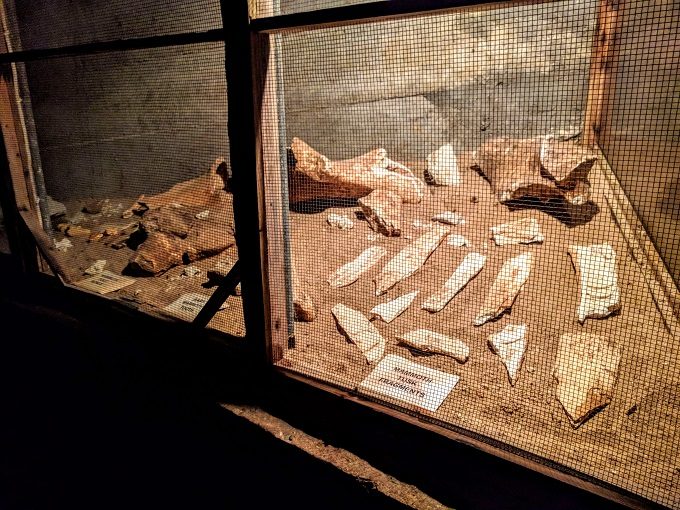
There’s even a 13 foot mammoth tusk visible which apparently still has the mammoth attached to it!
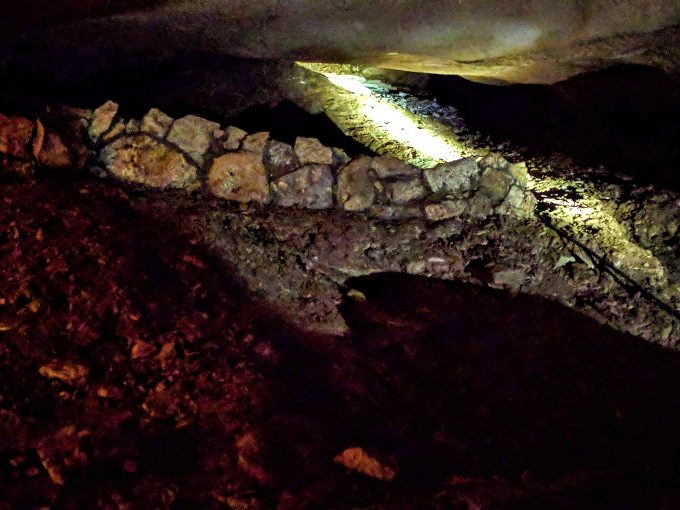
Next up was the Cathedral Room, so named due to the height of its ceiling. This is where many animal remains were found as there was once deep mud which trapped them.
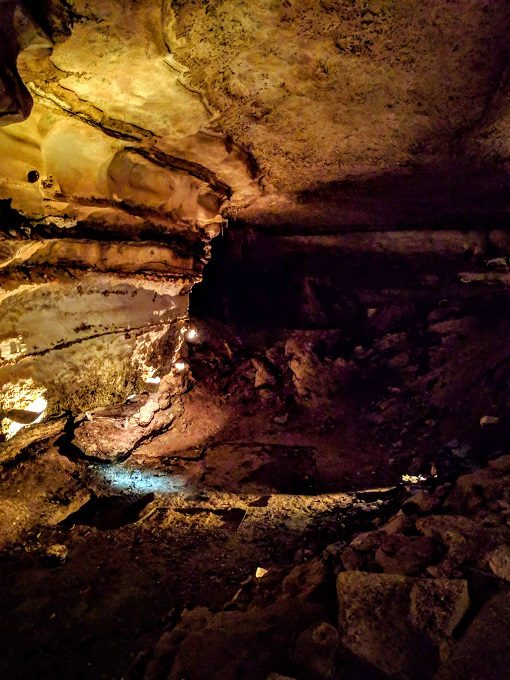
The steps in the photo below were once used to gain access to the cavern. Most of the fossilized remains were carefully transported out this way. John also shared that 90% of the concrete used to create the walkways in the cavern came down this hole.
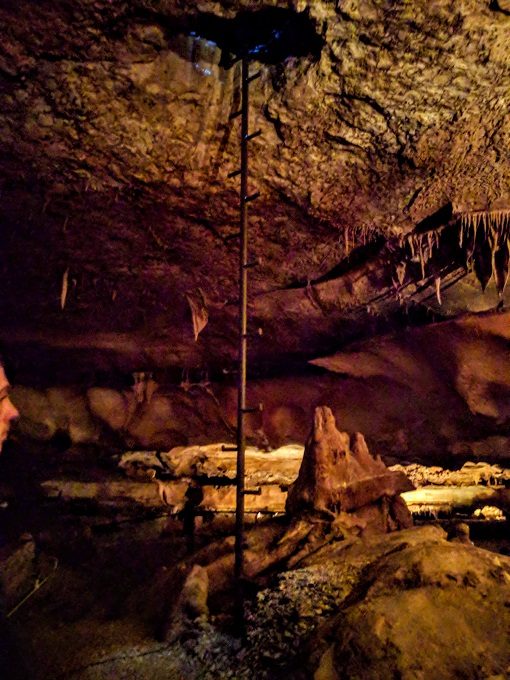
The next area we visited on the Adventure tour was the Imagination Station. It’s named that way as people see all different kinds of things in its formations.
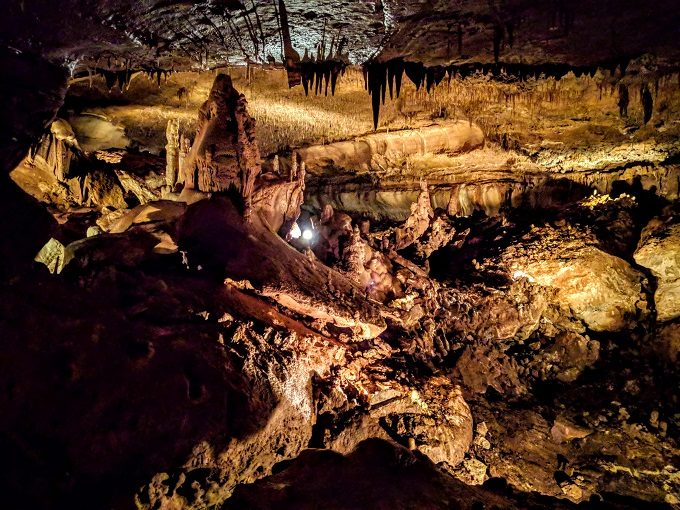
The final part of the tour found us looking out at the Lake of the Moon. It received this name in the mid 1960s – before humans landed on the moon – as it was what they imagined the moon would look like.
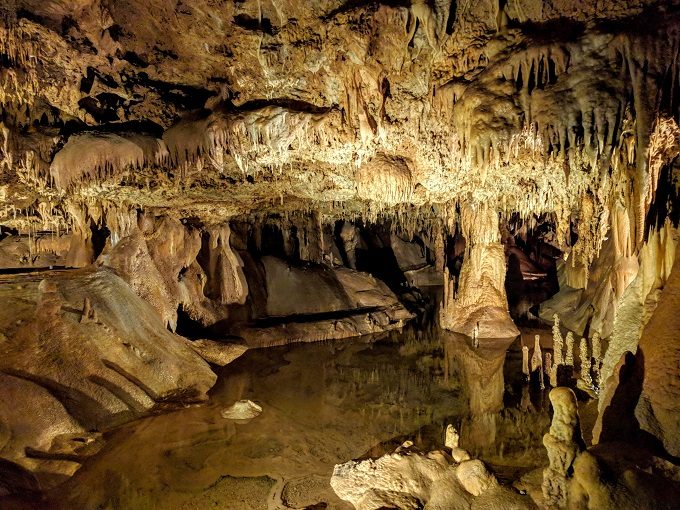
Other than the Flowstone of Time, I think this was my favorite part of the tour as it was so beautifully lit and had a wide variety of formations.
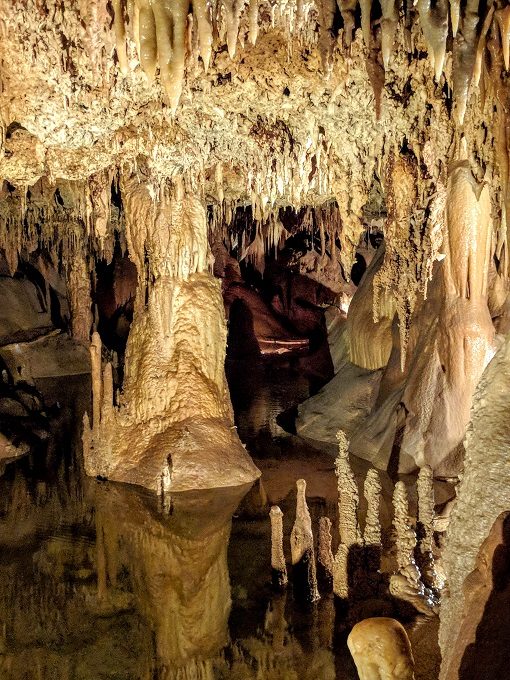
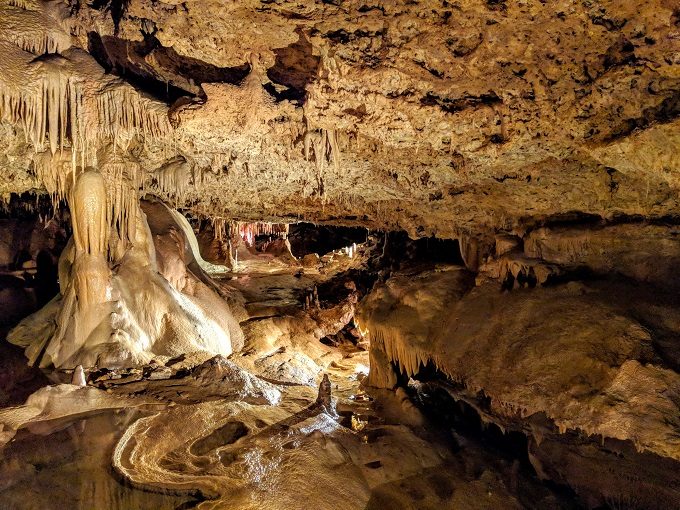
Final Thoughts
If you ever find yourself in Austin, Texas, we’d recommend taking a quick trip north to Georgetown which is where Inner Space Cavern is located.
It’s a beautiful cavern with different tour experiences available depending on your budget and how adventurous you’re feeling.
Inner Space Cavern Discount
We were able to save $1 for each of our tickets by printing off a coupon we found on the Inner Space Cavern website. That coupon can be used to get discounted tickets for both the Adventure tour and Hidden Passage tour.
Address
Inner Space Cavern, 4200 N Interstate 35 Frontage Rd, Georgetown, TX 78626
do you sell guano?
I’m afraid I don’t know if they sell it – you’d need to reach out to them directly.
My brother was the person that was let down into the cavern when it was drilled into. I have some rocks that he brought up from the cave.
That’s so cool!